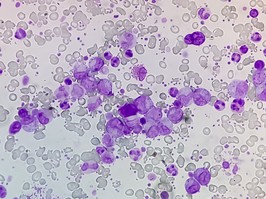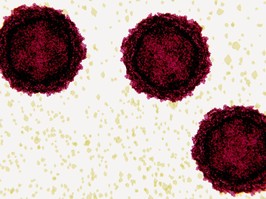powered by:
valneva canada inc.
elon musk's spacex, 'moon face' and farts
floating in the atmosphere is also linked to dementia, cardiovascular disease and cancer.
may 27 2020
 4 minute read
4 minute read


getty images
when commercial space flight eventually becomes widely available, we may want to watch out for bigger heads and a lot more farts.
today, elon musk’s spacex was supposed to launch two nasa astronauts from florida’s kennedy space center to the international space station (iss) in a mission they’re calling the demo 2, marking the first commercial space flight as well as the first time nasa has launched their own astronauts since 2011. should this prove successful — and if musk has his way — we could be embarking on a new and exciting trend of space tourism for the average joe.
due to the weather conditions, the launch was postponed until the afternoon of may 30th.
the two astronauts are robert behnken, 49, and douglas hurley, 53. their craft is the crew dragon, a fully autonomous capsule, that yes, has a bathroom. extra precautions are being taken due to the pandemic, like changing control rooms when a new shift begins, no visitors will be allowed at the kennedy center, and only a few dozen press members.
of course, anything involving space comes with its share of risks. spacex is required to ensure the crew dragon only has a 1 in 270 chance of catastrophic failure, based on nasa’s own metric. further, the crew dragon had previously completed an unmanned flight, which is something previous space shuttles did not have the benefit of.
advertisement
advertisement
the crew dragon also comes with a unique and previously tested emergency escape in case of disaster.
behnken and hurley will spend as many as 110 days aboard the station, after a 19 hour trip on the crew dragon, leaving behind the planet and the coronavirus. and while travelling to space is cool and everything, are our bodies made for space travel?
let’s start with a much less dangerous consequence of space travel: excessive flatulence . the freeze-dried space diet actually produces more gases than our earthbound diet. shuttle astronaut mike massimino has said that the smell tends to “kind of hang out” in spacecrafts due to poor airflow. former iss commander terry virts previously dispelled the notion that flatulence would propel you in zero-g.
first, upon entering zero gravity, the fluid in your legs and lower body move up towards your head, causing it to look and feel swollen. the result is known as “moon-face,” and can cause an occasional headache and congestion that usually goes away after three or four days.
muscle atrophy is another consequence of space travel. without regular exercise , astronauts can lose up to 20 per cent of their muscle mass in five to 11 days. astronauts on the iss spend about two and a half hours a day exercising. regular physical activity also helps the body to get used to gravity again once back on earth — a process that could take anywhere from a few days after a two-week flight, to several weeks for a six-month flight. astronauts can lose 1.5 per cent of their bone mass for every month spent in space, the greatest loss being in the thighs and pelvis.
advertisement
advertisement
a study published in april has shed light on a condition many astronauts have reported upon return to earth, known as spaceflight-associated neuro-ocular syndrome (sans). astronauts can develop impaired short-distance vision, headaches and see floating blurry spots called scotomas.
researchers in the journal radiology conducted mri scans pre- and post-flight of 11 astronauts who had been on the iss for an average of 171 days. the overall volume of their brains, particularly the white matter, as well as the volume of their cerebrospinal fluid (csf), increased by about two per cent. the size and shapes of their pituitary glands increased as well. since the pituitary gland is next to the optic nerve, this pressure may explain sans.
in 2019, astronaut scott kelly finished a year-long experiment comparing his time on the iss to his twin brother back on earth. kelly’s telomeres, the biomarkers of aging in our dna, became elongated. while most of his telomeres returned to normal length when he came back to solid ground, some became even shorter. this is a cause for concern because shortened telomeres are associated with reduced fertility, dementia, cardiovascular disease and some cancers.
advertisement
advertisement
he also developed thickening in his retina and his carotid artery and, in the months following his return showed a reduction in cognitive skills.
it’s worth noting the limitations of the study being the obviously small sample size of one, and the fact that the iss is in earth’s low orbit and is thus protected from most of the cosmic radiation in space. even then, however, astronauts are exposed to ten times the radiation the rest of us are.
solar flares, although rare, can give a fatal dose of radiation within minutes. in 2005, the iss crew was hit with a flare of this kind, called a proton storm, and was forced to take shelter in a bulkier part of the station designed to shield against exactly such a threat.
while it’s untrue that astronauts age faster in a relativistic sense , the myriad problems they encounter do correspond to the effects of aging.
one hundred and ten some odd days from now — if all goes well — behnken and hurley should land in the atlantic ocean, and we’ll hopefully know more about the health effects of travels to the final frontier.
nsokic@postmedia.com | @sokic_
don’t miss the latest on covid-19, reopening and life. subscribe to healthing’s daily newsletter coming out of covid




